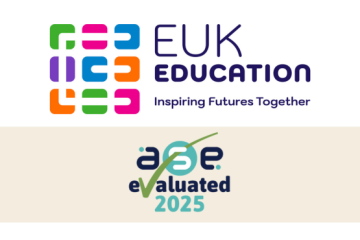ASE Evaluated for Engineering UK | Climate Schools Programme

The resources
Link to the programme:
What you get
The resources are branded and consistently presented so they are visually appealing to the learners (and teachers) who will be using them. The resources include teacher lesson plans, presentation slide deck and accompanying resources for students. The activities are well crafted; the resources are well designed and work well for teachers that want to just ‘pick up and go.
An overview of the resources
The resources are designed to be flexible so that teachers can use individual lessons or the whole set of lessons if they wish. There are accompanying resources for geography and English which means students can benefit from a cross-curricular approach to climate issues (the ASE Evaluated review has only evaluated the science specific activities). The content of the materials has been verified by the Royal Meteorological Society so teachers can be assured of its scientific validity.
The resources themselves are made available as editable files (Microsoft Office format) which means that they can be adapted to meet the needs of individual students such as those learners who need a specific font or colour scheme or those who need a more stripped back experience (perhaps for cognitive load or sensory reasons). The resources also include support materials such as a glossary of terms for learners who may not be familiar with the subject-specific vocabulary.
The resources include a diverse range of scientists and engineers who don’t fit the traditional stereotypes so that students from a range of backgrounds will see themselves reflected in the potential careers. The inclusion of real scientists and engineers can raise aspirations and is recommended by the Gatsby careers guidance (benchmark 4 - Linking curriculum learning to careers). There are links for some of these role models to allow learners to explore them in more detail. The inclusion of these industry role models feels natural and fits in well with the individual activities.

As well as the science content, the resources build in other useful skills that students need such as teamworking, presentation and problem solving. Where there are links to the curriculum, these are detailed in the lesson plan for teachers (for England, Wales, Scotland and Northern Ireland). Lesson plans also provide suggestions for differentiation where appropriate.

Range of activities
The resources include a range of activities (for example discussion work, research work, presentation) but the editable nature of the resources allows the teacher to adapt or remove activities that won’t work with their learners or activities that fall outside their comfort zone.
The presentations include colourful imagery and photographs, appropriate scientific diagrams and videos to hold the attention of older learners. Homework activities are included for when schools require these (the editable nature of the slides means that these could also be used as discussion opportunities in the classroom).
Scientific content
The scientific concepts are broken down and delivered over a sequence of lessons. There is an introductory lesson that introduces some of the vocabulary and higher-level concepts and then a focus on “energy in our lives” and the linked scientific concepts (electricity generation, heating at home and transport).
Activities are linked to real life applications to capture the interest of students. For example, in the lesson on Electricity generation, the activity includes data on renewable fuels and fossil fuels and leads learners through a comparison activity to evaluate the impact of each (with role cards to support the discussion).
In the Transport in our lives lesson, students apply what they have learned about electricity generation to transport, looking at how we can make cars more efficient and electric cars. This lesson is in two parts and includes a practical activity on building an electric motor. The teacher notes provide helpful guidance on how to run the activity and makes suggestions for the teacher to include in their own risk assessment (this list isn’t comprehensive, and teachers should always carry out their own risk assessment alongside latest guidelines from bodies like CLEAPPS & SSERC).

Summary
The flexible nature of the resources means that teachers can use as few or as many of the lesson plans as they find useful for their learners. The resources are varied and engaging to provide a stimulating approach to a topic that is likely to be of increasing importance as we move towards a net-zero approach.
Files
Click links to download individual files or…
